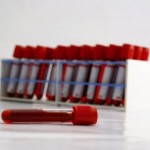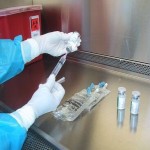Kinds Of Pathogens
The kinds of pathogens are classified according to the organism they infect. Some pathogens are deleterious to humans and animals alike, while there are those that infect animals but not humans. Other kinds of pathogens infect plants alone, and may not be harmful to humans, with a few exceptions.
These minute organisms can be viruses, bacteria, fungi or parasites.
Viral pathogens
Some of the kinds of pathogens that can affect humans the most are viruses. Viruses are highly transmissible, and some can be airborne. The reason why flu viruses are highly feared is that they can be deadly. Herpes simplex is a common virus which can be classified into type 1 and type 2. The main difference between these two types involves the area of the body they attack. Infections from HSV1 are primarily found around the oral cavity and face. CNS infections from herpes simplex are usually caused by HSV1. HSV2 is the type that leads to infection of the anogenital region.
Bacterial pathogens
Among the scariest kinds of pathogens are bacterial pathogens of humans. If left untreated, the diseases that result from bacterial infection could lead to death. Also, some bacterial strains quickly develop resistance to disease treatments. One antibiotic can work for a while, then fail to work the next time the person uses it to cure a certain bacterial infection. This is the main reason for the production of so many antibiotic brands. Examples of deadly bacterial diseases are Mycobacterium tuberculosis, Pseudomonas and Streptococcus. Some kinds of pathogens are transmitted via improperly cooked or prepared food, such as Shigella and Salmonella.
Fungal pathogens
Fungi are the kinds of pathogens that have eukaryotic counterparts, some of which are edible. But the species of fungi that infect humans are microorganisms. The most common deleterious fungal species include Aspergillus, which make up the mold growth found in basements and inside closets. The infectivity of these kinds of pathogens can be dependent on the resistance of a person to these kinds. For instance, a person with asthma or who is genetically predisposed to developing asthma may be more susceptible to noxious spores than someone who isn’t prone to this disease.
Plant pathogens
Pathogens that affect plants can be bacterial, fungal or viral. When a plant is infected, leaves become discolored, roots may rot and flowers may fall off. Most pathogens of plants attack during the vulnerable stages, like the seedling, ripening, flowering and seed stages. Some pathogens persist until after harvest, causing discoloration or rotting of the fruits. It is rare for a plant pathogen to infect humans that consume the infected plant parts as long as the fruit, leaves or stems to be consumed are washed properly.
Animal pathogens
Some pathogens of animals can infect humans, like viruses and bacteria that remain in the flesh of the animals. Bacteria are also common in meat that has not been processed well or has remained unfrozen from the time the animal was butchered. These bacteria may have been the cause of the animal’s death, in which case the pathogen will definitely infect the human who eats the meat.






